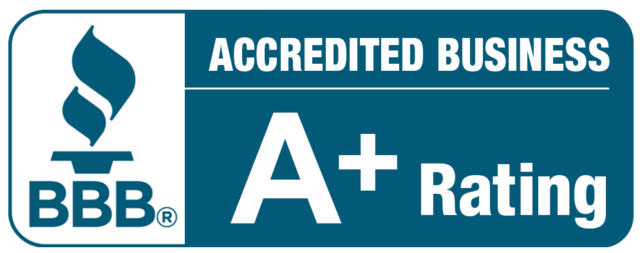Looking for how to care for quadriplegics? See this guide.
Caring for quadriplegic individuals is a profoundly compassionate endeavor that demands both empathy and expertise. Quadriplegia, often referred to as tetraplegia, is a condition that affects every aspect of a person’s life, resulting from severe spinal cord injuries that lead to paralysis in all four limbs.
According to ScienceDirect, Tetraplegia is defined as the impairment or loss of motor and/or sensory function in the cervical segments of the spinal cord due to damage to neural elements
In this comprehensive guide, we embark on a journey to explore the intricate art of caring for quadriplegics, offering invaluable insights and practical advice to enhance their quality of life.
We also emphasize the need to be compassionate, and patient, and have specialized knowledge while providing the best care and support to quadriplegic individuals, enhancing their quality of life.
What is Quadriplegia?
Understanding the nuances of quadriplegia is paramount before diving into the complexities of caregiving.
Quadriplegia, or tetraplegia, is a condition resulting from spinal cord injuries, impairing motor and sensory functions in both the arms and legs. Accidents can cause this condition, falls, or medical conditions.
The result of injury or illness almost always affects the spine resulting in partial or complete paralysis of both the arms and legs. Beyond affecting the four limbs, the torso can also be affected making the individual completely dependent on a caregiver.
Quadriplegia is a life-altering condition that requires specialized attention.
How To Care For For Quadriplegics?
Caring for quadriplegics requires specialized knowledge and attention. Not anyone can care for a quadriplegic. This is so because this care job requires lots of patience, compassion, and willingness to adequately care for the patient in this context.
To guide caregivers who want to start caring for quadriplegics, here are some care tips and guides to help you.
Create a Safe Environment
1. Adapt the Living Space
Modifying the living space is essential for a quadriplegic’s safety and convenience. This includes installing ramps, grab bars, and widening doorways for wheelchair access. Our guide on Essential Home Modifications To Enhance Safety will come in handy at this point.
2. Utilize Smart Home Technology
Leverage assistive devices like voice-controlled lights, smart home systems, and adaptive tools to enhance independence. This will help quadriplegics handle some tasks when the caregiver is away for some time.
Personal Care
3. Help Them Daily Hygiene
Assisting with daily hygiene routines such as bathing, dressing, and grooming is crucial. Ensure their comfort and dignity throughout these activities. If you are wondering what hygiene strategy comes in handy for quadriplegics, see our guide 15 Personal Hygiene Tips for In-Home Patients.
4. Help Prevent Pressure Ulcer
Quadriplegics are at risk of developing pressure ulcers due to reduced mobility.
Pressure ulcers are extremely common as a result of impaired motor control and sensation. The annual incidence of pressure ulcers in individuals with spinal cord injuries is 23-30% as reported by FlintRehab. To mitigate this, rotate and position them regularly to alleviate pressure and use specialized cushions.
Regularly changing positions, using specialized cushions, and maintaining proper skin care can help prevent pressure ulcers.
Mobility and Rehabilitation
5. Physical Therapy
Engage patients with quadriplegia in regular physical therapy sessions to maintain muscle tone, prevent contractures, and improve mobility. Physical therapy is also one way to help them relieve Chronic Pain if by chance they have one.
Also, through dedicated physical therapy and the use of assistive devices, some quadriplegics can regain limited mobility.
6. Assistive Devices
Assistive devices are needed to foster independence. Caregivers may not be with the patient all day long exploring options like power wheelchairs, mobility scooters, and adaptive equipment to facilitate independent movement when the caregiver is not around. So it is necessary to get an assistive device tailored to fit the quadriplegics’ needs and mobility issues.
Communication
7. Augmetative and Alternative Communication (AAC)
For those who have lost their ability to speak, AAC devices like communication boards or speech-generating devices can help them express themselves.
Caregivers can go for any of the AAC devices such as Pocket Go-Talk 5-Level Communication Device, The MegaBee Assisted Communication, and Writing Tablet or Roloquo2Go etc. Whatever choice you make, it should be tailored to fit the communication needs of the patient.
8. Learning Their Communication Style
Each quadriplegic may have unique ways of non-verbal communication. It’s essential to understand and adapt to their preferences. And while on this ensure to practice Active Listening as it helps to understand the patient better.
Emotional Support
9. Encourage Social Interaction
Feelings of isolation, depression, and anxiety are common emotional challenges faced by quadriplegic individuals. The core of emotional support when caring for quadriplegics is social interactions to help them combat these emtions.
Maintain a vibrant social life for quadriplegic individuals, fostering friendships and connections to combat feelings of isolation. Ensure they go out quite often and meet with other people this will make them feel like part of the big world out there.
10. Counseling and Mental Health Care
Quadriplegia often leads to emotional challenges. Provide access to counseling and mental health services when needed. You can liaise with their healthcare personnel to come up with counseling strategies to care for their mental health as well so they don’t fall into depression or feel alone at any point.
Nutrition and Diet
11. Balanced Diet
Another way to care for quadriplegics is to ensure they eat the right food always and that’s your job as a caregiver. Ensure the patient always has a balanced and nutritious diet to support their overall health. Consult with a dietitian to create meal plans tailored to their needs. Also, you can utilize our guide on Diet Planning to have a better understanding of how to go about this.
12. Monitoring Swallowing
Quadriplegics may have difficulty swallowing. Be vigilant and follow recommendations to prevent choking hazards.
Medication Management
13. Medication Administration
Administer medications as prescribed by healthcare professionals. Keep a detailed record of medication schedules. Also, you should have a better understanding of the Communication Strategies to Ensure Medication Compliance. Further, you can use various Technology Solutions for Medication Reminders to help keep track of the patient medication intake.
14. Monitoring Health
Regularly monitor vital signs and any signs of infections or complications. Promptly seek medical attention when necessary.
Conclusion
Caring for quadriplegics is a responsibility that demands compassion, dedication, and a comprehensive understanding of their unique needs. From creating a safe and accessible environment to managing nutrition and medication, caregivers can provide holistic and compassionate care for quadriplegic individuals while significantly improving their lives.
By following these strategies, caregivers can care for quadriplegics in a way that improves their well-being, fosters recovery, and keeps them happy and engaged.
If you need caregivers who prioritize self-care in Indiana, reach out to us at Good Hands home care agency or call us at +1-317-742-4135, +1-317-981-5990, or leave us an email via [email protected]
Our caregivers offer the best care because they are in the right frame of mind mentally, emotionally, and physically.




